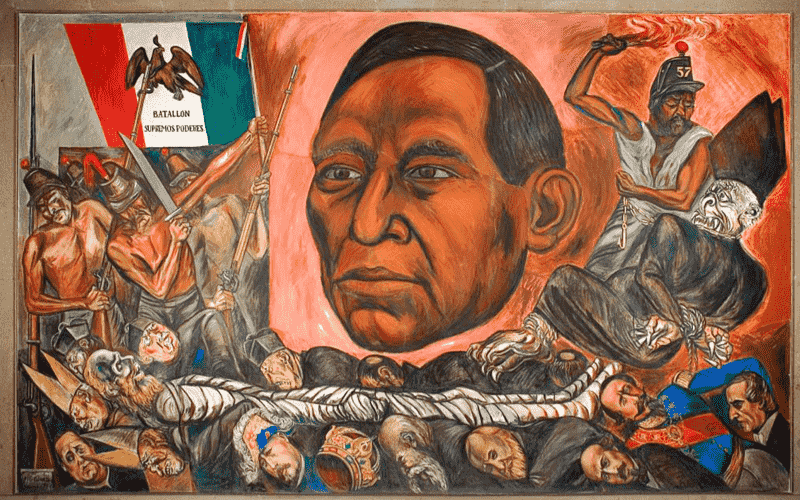The triumphal entry of Benito Juarez to Mexico City in 1861
Benito Juárez's triumphal entry into Mexico City in 1861, marking the end of the Reform War. The Supreme Federal Powers are reestablished.

On January 11, 1861, Benito Juarez made his triumphal entrance to the capital of the Republic. Days before, Mexico City had been recovered by the liberal army, which marked the end of the Reform War or Three Years' War.
The city had remained in the hands of the conservatives, who sought the annulment of the 1857 Constitution, the permanence of Ignacio Comonfort in the presidency, the summoning of an extraordinary Congress (Tacubaya Plan), and the strengthening of the Church and the Army.
The liberals, on the other hand, demanded a representative, federal and popular republic; the erasure of all colonial heritage, and the disentailment of the clergy's property through the Reform Laws. Upon entering Mexico City, Juarez called for new elections. He was sworn in as constitutional president of the Republic on June 15, 1861.
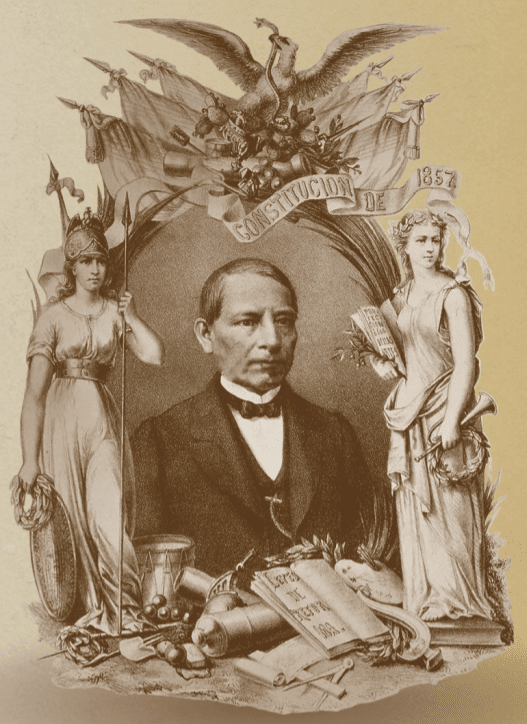
Benito Juarez returns to the capital
On January 11, 1861, after the liberal artillery defeated the conservative forces in Calpulalpan, President Benito Juarez entered Mexico City with triumphant impetus. In the festive mood of the crowd that followed him to the gates of the National Palace, there was perhaps the memory of the rebels of the Tacubaya Plan who had disowned the government of Ignacio Comonfort and Juarez's subsequent departure from the capital to organize the resistance and defend the constitutional government. To the voice of "Religion and rights" and "Constitution and Reform", the civil war marked the course of those three years.
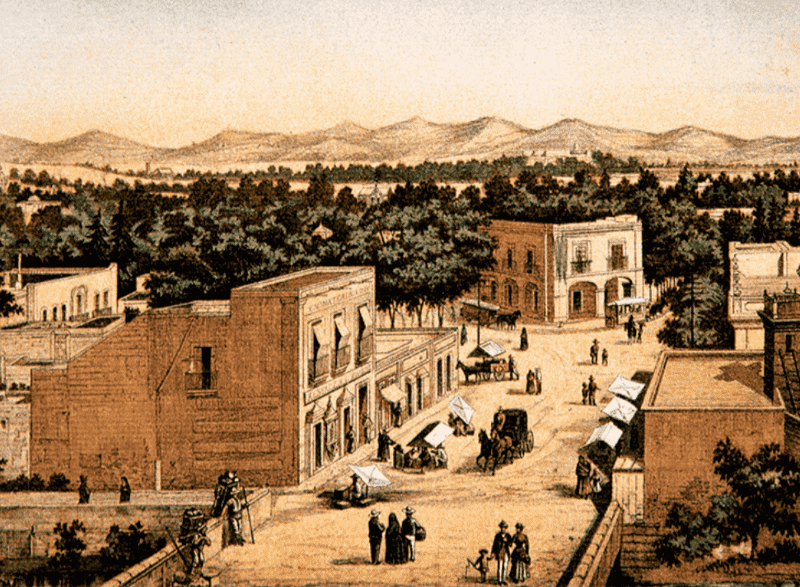
Timeline
December 17, 1857
Proclamation of the Tacubaya Plan. Juárez was apprehended in the National Palace.
January 11, 1858
Félix Zuloaga disowned Ignacio Comonfort and assumed the presidency. Benito Juárez was released from prison and left for Querétaro.
January 19, 1858
In Guanajuato, Benito Juárez was appointed interim president.
February 14 - May 4, 1858
Benito Juárez began a long journey from Guadalajara through Colima, Manzanillo, Panama, Havana, and New Orleans to Veracruz, where he established his government.
March 10 - December 26, 1858
The conservative armies advanced over a good part of the center and west of the country. The liberals occupied most of the northern border ports and customs.
January 31, 1859
General Miguel Miramón was designated, by General Félix Zuloaga, as substitute president.
July 7, 1859
President Benito Juárez published a manifesto announcing the publication of the Reform Laws.
September 26, 1859
The signing of the Mon-Almonte Treaty, by which the conservative government recognized debts contracted with Spain in the past, in exchange for an economic loan and recognition of its government. It never entered into force.
December 14, 1859
The signing of the McLane-Ocampo Treaty, in which the constitutional government granted the United States the right of transit in Mexican territory for U.S. troops and merchandise; however, was not ratified.
June 14, 1860
Liberal troops, commanded by Jesús González Ortega, defeated conservative forces in Peñuelas, Aguascalientes.
August 10, 1860
Generals Jesús González Ortega and Ignacio Zaragoza defeated General Miramón in Silao, Guanajuato.
October 19, 1860
Ignacio Zaragoza defeated the conservatives and lifted the siege of Guadalajara.
December 22nd, 1860
The forces of Jesús González Ortega, Ignacio Zaragoza and Leandro Valle completely defeated the conservative army in the battle of Calpulalpan.
January 11, 1861
President Benito Juárez made his triumphal entry into Mexico City.
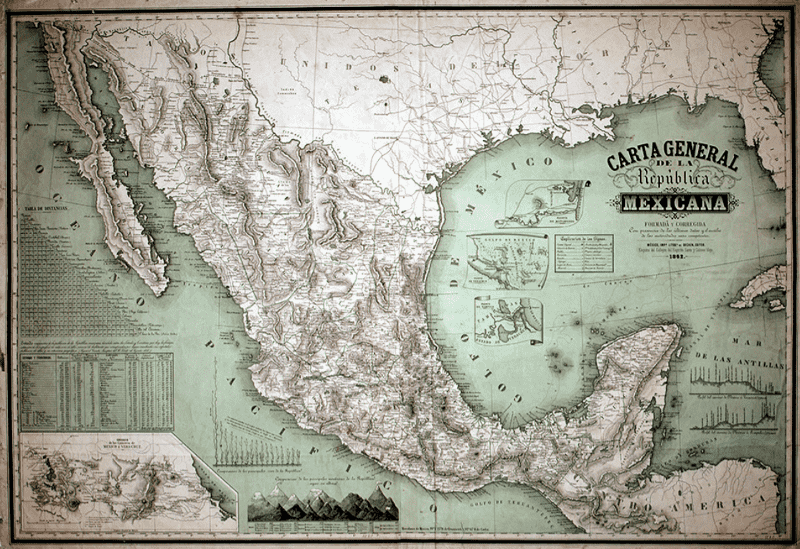
The Constitution of 1857 on the knife's edge
The yearnings for harmony expressed in the swearing-in ceremony of the new Constitution, on February 5, 1857, soon vanished in the face of the reaction of the conservatives. The constituent pronounced himself in favor of liberal reform, proclaimed the rights of man, and established individual guarantees. Such principles were alien to conservative expectations, but more serious for them was the fact that religious intolerance had not been explicitly included in the constitutional text. Consequently, they accused it of being impious and incited the population to disregard its laws. Finally, the Tacubaya Plan, proclaimed by General Félix Zuloaga, called for the repeal of the Constitution and unleashed the war between liberals and conservatives.
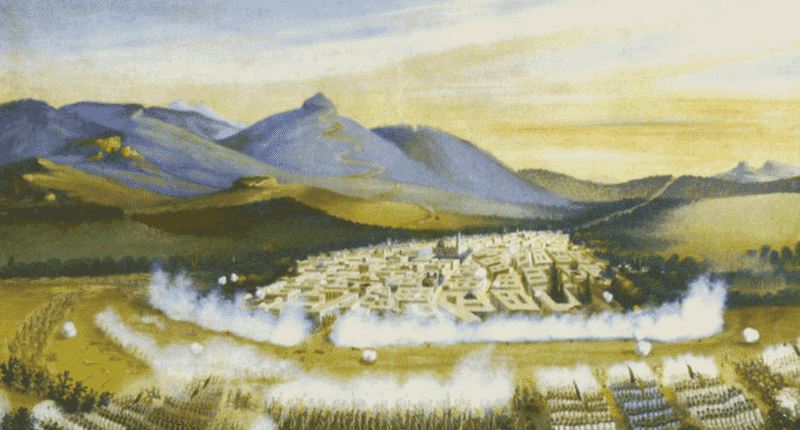
The reform laws, winds of change
On July 7, 1859, amid the civil war, President Benito Juarez published in Veracruz the manifesto in which he explained the justification for implementing a set of constitutional norms, known as the Reform Laws, aimed at transforming the structures inherited from the colonial regime about rights: justice, property, the legal status of marriage and death, etc. With their promulgation, a radical process of secularization of the Mexican State began in the country, which gradually affected the private sphere and thought. The Reform "touched" consciences, hence the outbreak of civil war.
